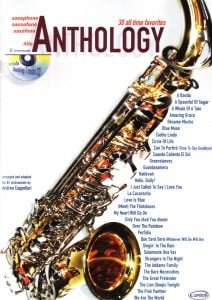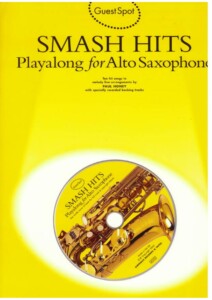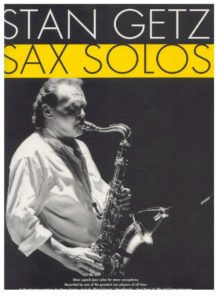Come join us now, and enjoy playing your beloved music and browse through great scores of every level and styles!
Can’t find the songbook you’re looking for? Please, email us at: sheetmusiclibrarypdf@gmail.com We’d like to help you!
Table of Contents
Sidney Bechet, “Petite Fleur”
Sidney Bechet (May 14, 1897 – May 14, 1959)
was an American jazz clarinetist, saxophonist, and composer. He was one of the first important soloists in jazz, beating trumpeter Louis Armstrong to the recording studio by several months. His erratic temperament hampered his career, and not until the late 1940s did he earn wide acclaim.
Best Sheet Music download from our Library.

Sidney Bechet was the first important jazz soloist on records in history (beating Louis Armstrong by a few months). A brilliant soprano saxophonist and clarinetist with a wide vibrato that listeners either loved or hated, Bechet’s style did not evolve much through the years but he never lost his enthusiasm or creativity. A master at both individual and collective improvisation within the genre of New Orleans jazz, Bechet was such a dominant player that trumpeters found it very difficult to play with him. Bechet wanted to play lead and it was up to the other horns to stay out of his way.
Sidney Bechet studied clarinet in New Orleans with Lorenzo Tio, Big Eye Louis Nelson, and George Baquet and he developed so quickly that as a child he was playing with some of the top bands in the city. He even taught clarinet, and one of his students (Jimmie Noone) was actually two years older than him. In 1917, he traveled to Chicago, and in 1919 he joined Will Marion Cook’s orchestra, touring Europe with Cook and receiving a remarkably perceptive review from Ernst Ansermet.
While overseas he found a soprano sax in a store and from then on it was his main instrument. Back in the U.S., Bechet made his recording debut in 1923 with Clarence Williams and during the next two years he appeared on records backing blues singers, interacting with Louis Armstrong and playing some stunning solos. He was with Duke Ellington’s early orchestra for a period, and at one point hired a young Johnny Hodges for his own band. However, from 1925-1929 Bechet was overseas, traveling as far as Russia but getting in trouble (and spending jail time) in France before being deported.
Most of the 1930s were comparatively lean times for Bechet. He worked with Noble Sissle on and off and had a brilliant session with his New Orleans Feetwarmers in 1932 (featuring trumpeter Tommy Ladnier). But he also ran a tailor’s shop, which was more notable for its jam sessions than for any money it might make. However, in 1938 he had a hit recording of “Summertime,” Hugues Panassie featured Bechet on some records, and soon he was signed to Bluebird where he recorded quite a few classics during the next three years.
Please, subscribe to our Library.
If you are already a subscriber, please, check our NEW SCORES’ page every month for new sheet music. THANK YOU!
Sidney Bechet worked regularly in New York, appeared on some of Eddie Condon’s Town Hall concerts, and in 1945 he tried unsuccessfully to have a band with the veteran trumpeter Bunk Johnson (whose constant drinking killed the project). Jobs began to dry up about this time, and Bechet opened up what he hoped would be a music school. He only had one main pupil, but Bob Wilber became his protégé.
Sidney Bechet’s fortunes changed drastically in 1949. He was invited to the Salle Pleyel Jazz Festival in Paris, caused a sensation, and decided to move permanently overseas. Within a couple of years, he was a major celebrity and a national hero in France, even though the public in the U.S. never did know who he was. Bechet’s last decade was filled with exciting concerts, many recordings, and infrequent visits back to the U.S. before his death from cancer. His colorful (if sometimes fanciful) memoirs Treat It Gentle and John Chilton’s magnificent Bechet biography The Wizard of Jazz (which traces his life nearly week-by-week) are both highly recommended. Many of Sidney Bechet’s recordings are currently available on CD.
“Petite Fleur” is an instrumental written by Sidney Bechet and recorded by him in January 1952, first with the Sidney Bechet All Stars and later with Claude Luter and his Orchestra.
In 1959, it was an international hit as a clarinet solo by Monty Sunshine with Chris Barber’s Jazz Band.[1] This recording, which was made on October 10, 1956, peaked at No. 5 on the US Hot 100 and No. 4 in the UK charts.
Outside UK Chris Barber’s version was colossal in Sweden topping the Swedish best-selling chart for no less than 12 weeks according to the branch paper Show Business. Their version was in A♭ minor, in contrast to Bechet’s, which was in G minor.
There was also another recording by Bob Crosby and the Bobcats. Following the Chris Barber instrumental recording, lyrics were added by Fernand Bonifay and Mario Bua in the same year. A different set of lyrics was written by Paddy Roberts, and the song was recorded by Teddy Johnson and Pearl Carr in 1959.
Petula Clark recorded the song in French, and it was included in her album Hello Paris (1962).

Browse in the Library:
Or browse in the categories menus & download the Library Catalog PDF:
Petite Fleur
“Petite Fleur” is an instrumental written by Sidney Bechet and recorded by him in January 1952, first with the Sidney Bechet All Stars and later with Claude Luter and his Orchestra.
In 1959, it was an international hit as a clarinet solo by Monty Sunshine with Chris Barber’s Jazz Band. This recording, which was made on October 10, 1956, peaked at No. 5 on the US Hot 100 and No. 3 in the UK charts.
Outside the UK, Chris Barber’s version was huge in Sweden, topping the Swedish best-selling chart for no less than 12 weeks according to the branch paper Show Business. Their version was in A♭ minor, in contrast to Bechet’s, which was in G minor.

